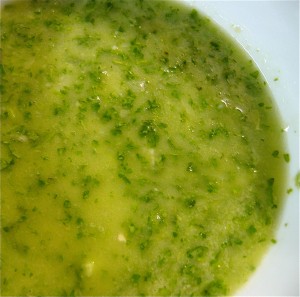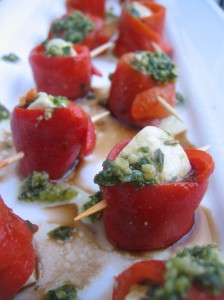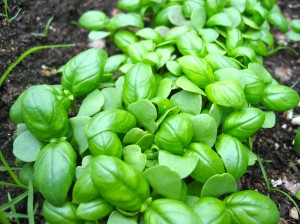Mon 12 Jul 2010
Grilled Steak and Summer Vegetable Salad
Posted by Recipe Sleuth under New Finds
No Comments
This new find from the July/August issue of Everyday Food starts with a rosemary-garlic oil that is brushed on both the steak and the vegetables prior to grilling.
While the cooked steak is resting you can quickly grill the vegetables and then drizzle them and the steak with a dressing made of the herb oil, balsamic vinegar and honey. I didn’t have eggplant or summer squash, so I used wedges of radicchio, halved fingerling potatoes, orange bell pepper, cherry tomatoes, red onion slices, zucchini and scallions.
To avoid additives in this recipe, be sure to use a brand of balsamic vinegar that contains only naturally occurring sulfites or that is labeled “no sulfites added”.
Ingredients:
1/3 cup extra-virgin olive oil, plus more for grill
2 sprigs rosemary
5 garlic cloves, thinly sliced
1 ¼ lbs steak
Coarse salt and freshly ground pepper
1 medium eggplant, cut into ¼-inch slices
1 zucchini, cut into ¼-inch-thick slices
1 yellow squash, cut into ¼-inch-thick slices
½ lb cherry tomatoes on the vine, or plum tomatoes halved
1 bunch scallions
1 sweet bell pepper, any colour, cut into sixths, seeds and stem removed
2 tbsp balsamic vinegar
1 ½ tsp honey
Preparation:
Heat a grill to medium-high. Clean and lightly oil hot grill. In a small oven-proof pot, combine oil, rosemary and garlic and place on grill or stovetop burner. Cook until oil begins to bubble, 2 minutes. Remove herb oil from heat and set aside 3 tablespoons in a small bowl. Brush steak with herb oil, season with salt and pepper, and grill, turning occasionally, until it is medium-rare. Transfer to a cutting board and tent with foil. Let rest for 10 minutes.
In batches, brush vegetables with herb oil, season with salt and pepper, and grill, turning occasionally, until tomato skins are split and vegetables are tender, 3-5 minutes total. Transfer to a serving platter. Add vinegar and honey to reserved oil and whisk together. Season to taste with salt and pepper, then drizzle dressing over steak and vegetables. Serves 4.
From the July/August issue of Everyday Food













